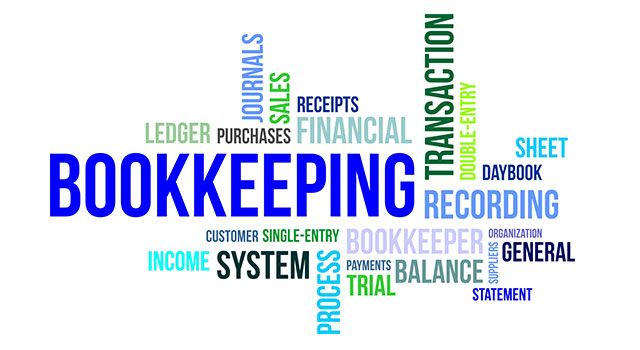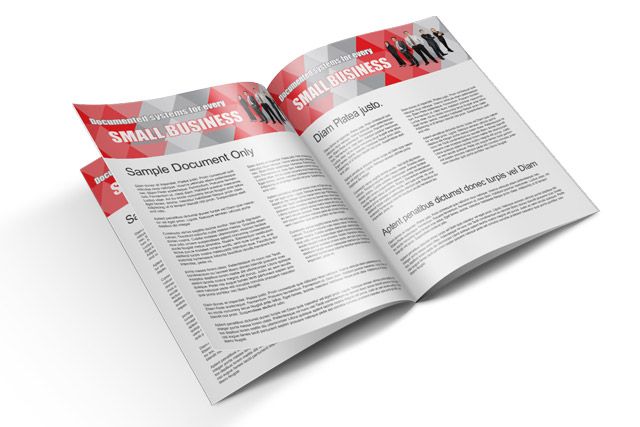
Reducing Debtors' Days Outstanding
Issue 0006
Take control of your outstanding debtors
In September 2013, Dun & Bradstreet released their latest report on indebtedness to Australian businesses. Dun & Bradstreet indicated that the average debtors’ days outstanding in Australia was 54 days. This is in comparison with the traditional credit terms granted by most businesses, which is 30 days. This means that, for a business which has credit sales of $2M, the debtors’ days outstanding would be in the vicinity of $295,000, if their debtors were trading in 54 days. Whereas, if they were abiding by the terms of trade stated by that business, the debtors’ balance would be $164,000. This is a difference of $131,000. If this is your business scenario, I assume you could do with that extra $131,000 in your bank account, rather than having that amount owing to you by your debtors. Unfortunately, I am also well aware that there are quite a number of small businesses which have debtors’ days outstanding of higher than 54 days. Even if your debtors’ days outstanding was 40 days, this would be a balance of $219,000, a significant improvement from the $295,000 of 54 days. However, the excess over the 30 days’ balance is still $76,000. These are quite big figures.
Do you know that there are many small businesses in Australia that are trading within the 30 day terms? They are utilising debtors’ management systems, written systems which ensure follow-ups, to keep on top of their debtors’ system. If there was a way you could reduce your debtors’ balances back to around 30 days, you would want to know about it, wouldn’t you? The reason I mentioned this is that accountants, who are offering business advisory services, can assist small/medium enterprises to implement an effective debtors’ management system.
Credit Application Form
An effective debtors’ management system commences with a written credit application form. Do you ask your potential customers to complete a credit application form, which forces them to identify exactly who they are, the business name with which they will be trading with you, their business address, contact details, etc. The form should invite them to supply details of the type of business they are operating. After all, they want you to supply the goods and services to them and take, at least, 30 days to pay you. I believe you’re entitled to know:
- if they are operating in their own premises;
- if they are leasing their premises;
- their turnover;
- their average investment in stock; and
- whether they can supply you with the names of, at least, three of their current suppliers as trade references.
This also gives you the opportunity to specify your terms of credit as per your credit application form.
Director’s Guarantee Form
The next area to look at is the director’s guarantee form. Unfortunately, there are some people within the business community who are hiding behind corporate entities and incurring debts for which they are unable to pay. They do however have personal assets. This is one of the reasons why it’s a very common practice to ask for directors of private companies to offer personal guarantees to a business that is going to allow them credit. You should make sure you receive the director’s guarantee form and file it so it can be found at some future date, when you may need to use it. That might be 4-5 years away.
Welcome To New Customer Letter
The next item is the welcome to new customer letter.
- Do you supply a letter to your new customer, to whom you agree to offer credit terms?
- Does your letter confirm the credit terms you are offering?
- Are the payment arrangements specified and indicates that you want to be paid within 30 days?
- Does your letter invite the new customer to supply any details of specific additional information they might require to be attached to your tax invoices, to speed up the payment process?
- Does your letter invite them to advise you of the date they wish to receive the invoices, to ensure prompt payment of your accounts?
Personal Property Securities Act (PPSA)
The next item, which is very important and topical at present, is the PPSA. Have you had a look at this legislation and spoken to your commercial solicitor and your accountant in relation to how your business can avoid some of the problems businesses in Australia and New Zealand have already suffered? The PPSA requires businesses to reconsider their Retention of Title Clauses, which are traditionally known as ‘Romalpa Clauses’. If your Retention of Title Clause hasn’t been re-drafted in the last two years, it is advisable to see your commercial solicitor to make sure your Romalpa Clause complies with the requirements of the PPSA. You also need to have a Terms of Trade document drafted. Internal procedures should be implemented to enable you to determine whether you should be registering some or all of your transactions (ie for goods supplied to customers under the Retention of Title Clause) on the Personal Property Securities Register (PPSR). This will protect your interest, in the event that a liquidator, receiver or a trustee in bankruptcy is appointed to your customer. PPSR is a very complicated area. We discussed PPSR in the previous edition of Survival Hints for Small Business and will do so again over the next few weeks. In the meantime, if you don’t know how PPSR works and you’re supplying products to your customers under a Romalpa Clause, it is advisable that you have a discussion with your commercial solicitor urgently.
Debtors’ Days Outstanding Calculation
- Do you regularly calculate what your effective debtors’ days outstanding are?
- Do you know how to calculate them? Your accountant should be able to supply you with a form, which helps you calculate your debtors’ days outstanding, so you can compare this to your target, whether it be 30 days or, as per Dun & Bradstreet figure, 54 days.
- Do you have an internal procedure, which helps you identify the major debtors with whom you need to have discussions to ensure you’re going to receive a substantial amount of money from them during the forthcoming period of time? Is this procedure carried out monthly, but preferably weekly?
You’re not going to be able to reduce your debtors from 54 days, to even 40 days, unless you have a ‘plan of attack’. This means you need to identify very clearly those debtors, who you are going to be approaching, to try to get a substantial amount from them, to reduce their indebtedness to you.
Debt Recovery
Businesses that have a good debtors’ system have debt recovery procedures in place. When invoices are sent to their customers, they then monitor the payment dates, in accordance with their terms of trade. Five days before the due date, an email is sent to their customer, reminding them of the payment due date for their invoice. This helps prompt the payment of the invoices. If the customer doesn’t pay you, what do you do then? A proper system helps you identify what to do. Generally, you go through a process, for a week or so, of sending reminder letters, followed by telephone calls. Then the debt basically should be referred to a debt recovery organisation. If you don’t take prompt actions, you are likely to lose all of that money. Businesses that have an effective debtors’ management system should have staff training systems in place on how the debtors’ system works. This will enable them to be very effective in implementing debt recovery procedures.
Accountants Can Assist
Accountants, who are offering business advisory services, can supply their clients with a ‘debtors’ system manual’, which is customised for your business. This manual will assist you to implement appropriate systems, to reduce the amount of money owed to you. In the first instance, it is advisable to approach your accountant and ask whether they are in the position to give you effective advice on reducing your debtors. If they are unable to assist you, because they are not offering business advisory services, please send an email to peter@essbiztools.com.au with your location and postcode and we will send you the names of accountants within your area, who are offering these types of services. ESS BIZTOOLS has developed hundreds of articles and other templates, to assist small business operators to improve their business operations. A complimentary copy of our template, ‘Debtors’ Reduction Checklist’ and ‘Debtors’ Days Outstanding Calculator’ is available at:
Past Posts
-
 Innovation is Important for SMEs
Innovation is Important for SMEs -
 6 Steps to Boost Your Productivity and Profits
6 Steps to Boost Your Productivity and Profits -
 Tax Incentives For Early Stage Investors
Tax Incentives For Early Stage Investors -
 ESIC Targets SMEs, Inventors, Young Companies
ESIC Targets SMEs, Inventors, Young Companies -
 Early Stage Innovation Company Investor Opportunities
Early Stage Innovation Company Investor Opportunities -
 Will You Have an ESIC Story?
Will You Have an ESIC Story? -
 Are you Receiving a CFO Service from your Accountants?
Are you Receiving a CFO Service from your Accountants? -
 Succession Planning
Succession Planning -
 Business Plans
Business Plans -
 The Year for Business Advisory Services!
The Year for Business Advisory Services! -
 Are you Aware of the PPSR?
Are you Aware of the PPSR? -
 SME Operators – Accountants can Help you with Debtors’ Ma...
SME Operators – Accountants can Help you with Debtors’ Ma... -
 Happy New Financial Year
Happy New Financial Year -
 The Finalisation of the ESIC Legislation will be a Great ...
The Finalisation of the ESIC Legislation will be a Great ... -
 A Business Evaluation Review Can Assist You
A Business Evaluation Review Can Assist You -
 June is a Great Time to Prepare a Business Plan
June is a Great Time to Prepare a Business Plan -
 Businesses Need a Broad Succession Strategy
Businesses Need a Broad Succession Strategy -
 Innovation Companies are a Great Opportunity for SMEs
Innovation Companies are a Great Opportunity for SMEs -
 The PPSR – are you aware of it and how it can affect your...
The PPSR – are you aware of it and how it can affect your... -
 Debtors Management - Vital for Business Success
Debtors Management - Vital for Business Success -
 How can your Accountant assist you?
How can your Accountant assist you? -
 The Personal Property Securities Register – how do you pr...
The Personal Property Securities Register – how do you pr... -
 Legal Advice is Essential for Business Success
Legal Advice is Essential for Business Success -
 Is your accountant your trusted adviser
Is your accountant your trusted adviser -
 Is your accountant famous for adding value?
Is your accountant famous for adding value? -
 Portfolio Allocations Are Important For Effective Management
Portfolio Allocations Are Important For Effective Management -
 The Challenges To Navigate In 2015
The Challenges To Navigate In 2015 -
 Business Plans Are Important For All Businesses
Business Plans Are Important For All Businesses -
 Entrepreneurs’ Infrastructure Program
Entrepreneurs’ Infrastructure Program -
 Digital Disruption Is A Major Concern
Digital Disruption Is A Major Concern -
 Court Case Decisions on the Personal Property Securities ...
Court Case Decisions on the Personal Property Securities ... -
 Personal Property Securities Act Presents Businesses A "T...
Personal Property Securities Act Presents Businesses A "T... -
 Do You Require Additional Financial Services?
Do You Require Additional Financial Services? -
 Personal Property Securities Act – How Does It Affect Sma...
Personal Property Securities Act – How Does It Affect Sma... -
 Business Health Checks For Your Business
Business Health Checks For Your Business -
 Why Do Some Accountants Offer Chief Financial Officer Ser...
Why Do Some Accountants Offer Chief Financial Officer Ser... -
 Getting Assistance From Your Accountant To Better Manage ...
Getting Assistance From Your Accountant To Better Manage ... -
 Identifying The Services You Want To Receive From Your Ac...
Identifying The Services You Want To Receive From Your Ac... -
 What Is Business Advisory Services?
What Is Business Advisory Services? -
 Accountants Can Offer More Services Than Just Tax Returns
Accountants Can Offer More Services Than Just Tax Returns -
 Being Kept In The Loop By Your Accountant
Being Kept In The Loop By Your Accountant -
 Personal Property Securities Register – Have You Develope...
Personal Property Securities Register – Have You Develope... -
 Reducing Debtors' Days Outstanding
Reducing Debtors' Days Outstanding -
 Management of Costs - An Overview
Management of Costs - An Overview -
 Succession Planning - Why Is It Necessary?
Succession Planning - Why Is It Necessary? -
 Safe Guarding your Business under the Personal Property S...
Safe Guarding your Business under the Personal Property S...




































